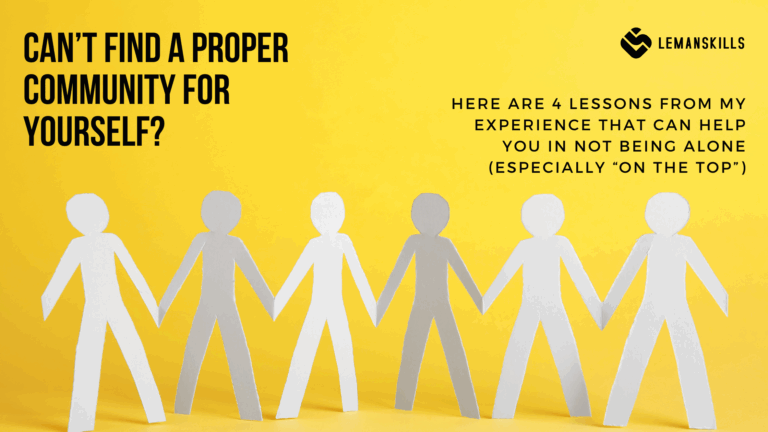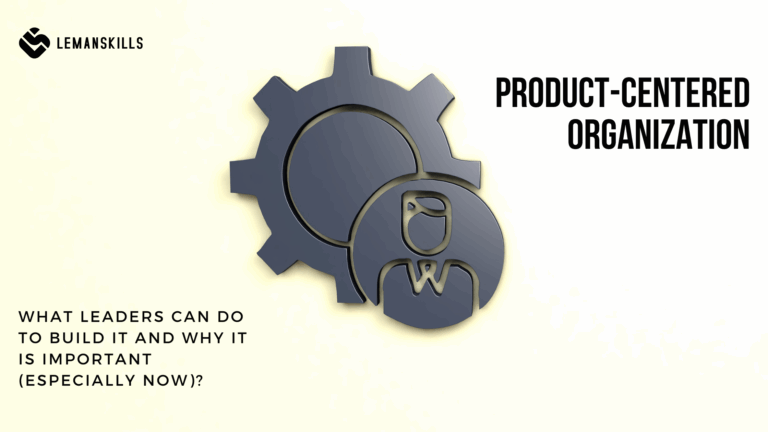Learning a new foreign language is one of the most common New Year’s resolutions. If you live in a country when English is not a native language, you probably heard a lot that “you need to learn languages, this is the future”. And how on Earth we should do it when the school experience is often really bad (mine was for sure)? My experience was a lot of grammar, no communication (because the course book was constructed like that), and when it was time to have some conversations, the school year was over. And we’ve started all of the grammar part again because the new school year was there.
Sounds familiar?
In that kind of system we lost all the fun and curiosity of getting to know a new language way before it started. When something is painful or we’re forced to learn it, it’s quite probable that it won’t stick to us. That our brain is going to see this as a punishment and won’t truly engage.
So how to charm away this mindset about learning a new foreign language? As a Polish person, learning mainly English through my whole adolescent and adult life and learning French at the moment, I want to share with you 5 things that help me all the time to keep my learning momentum going. No matter what happens.
1. Little things are the big things – keep doing them
We all love quick results. Our brain gets a dopamine boost, a wave of endorphins flows through our veins and it’s one of the best feelings ever. We got used to that by having almost everything a click away by using internet as a part of who we are as human beings. Because of that kind of availability, we’re getting upset when we need to wait for something – even if it’s just a couple of minutes.
So what can we say about learning a language, which requires a certain number of valuable hours of contact with language to reach each level? It can look like a nightmare. Also, it can unconditionally run the I-don’t-have-time excuse. But there is a way to uncharm the conviction that we have in our heads about it.
The key to learning any skill or habit is consistency. It’s the same when we think about going to the gym: we are not going to get fit, thin or muscular after going to the gym once. We need to do it 3-4 times a week at least, for some people it’s every day. Even if it’s doing just 5 pushups after washing the teeth in the morning, it’s a small brick we add to the wall we build.
The exact same scenario is applicable when it comes to learning the language. Do it every day, even if it’s just 5 minutes. Read a short article, do Duolingo, learn vocab on the app. Every 5 minutes combines with the time you spend on learning every week or month, and the compound effect starts working.
5 minutes every day is 2,5 hours per month.
2,5 hours per month is 30 hours per year.
And see what happens when you invest in it 20 minutes per day (it’s a half of an average episode of a series on Netflix).
20 minutes per day is 10 hours per month.
10 hours per month is 120 hours per year.
Based on the article I linked for you 2 paragraphs earlier, it is almost enough to reach A2 level of a new foreign language. How does it sound for you? Better than skipping a half of an episode per day?
2. Make it easy to do
Most of the time learning a new language is not about motivation. It’s about the skill – something is difficult, we don’t know how to do it or we are getting frustrated that we don’t learn as fast as we wish.
And if it’s hard, we quit. Natural thing.

To overcome it (and you can use it not only to learning a language, but basically to everything new you want to do like building every other new habit) we need to make it easy. When something is easy, we don’t need much effort to do it. And when it’s almost effortless, we do just do it without even thinking about it. It’s like with the easiest tasks we have on our task list – most of us start with the easiest ones, even if they don’t bring a lot of value. It convince our brain that we are busy and valuable.
Start with an easy level on Duolingo. Learn 10 new words in a vocab app per day. Take one page of a book or article in a language you want to learn and underline all the words that you already know, or they seem to be familiar to those you know. Put them in the app and start from there. Do one exercise from the coursebook and close it. Even if you can do more, start with just one and come back to where you finished the next day.
Over time it would be not enough for you, and you’ll do more, but just as a start – don’t push it, until you feel 100% comfortable with what you do at the moment. Then push a little bit harder, do a more difficult and uncomfortable step – but only when you are a master of a previous one. That will bring you peace and safety – 2 things that influence our brain the most. If we want to stay on track, our brain can’t be in danger all the time, because it’ll run flight/fight/freeze mode. Take care of your brain and it’ll take care of yourself.
3. Try different things, don’t blindly go with something that doesn’t work for you
Everybody learns at the language school in a group? It must be it. Both my best friends told me that they have an individual tutor or a native speaker? Yeah, it should work out for me too then. All those people I know are using app X or Y, so it has to work.
True or false?
False it is, since all of us learn differently, have certain needs or conditions we require to go through a learning process successfully. Using my story: I failed miserably a couple of times while attending classroom courses. At high school, at the university and language school as well.
I just cannot learn a language in a group process. Sometimes I get bored. Sometimes something is too difficult for me to understand at the first sight, and I need more details to get it right. There is no space for that kind of questions in a group course. I’m a reader, not a listener – learning from ear is killing me. So just having conversations won’t work for my brain. Like ever.
But there are many people who enjoy learning like that. They need the flow of the group, they can meet new people, share experiences, talk to others. And that’s perfectly fine.
And at the other hand, I have an amazing French teacher (https://www.facebook.com/lapostrophe.fle), we have 1:1 lesson once a week. I have exercises to do in between, it’s my responsibility to organize everything during the week that I cover everything I want. And that system works for me. This choice is perfectly fine too.
But there are many people who procrastinate homework, cancel lessons at the very last moment before it with I-didn’t-have-time-to-do-my-homework excuse. Even if they need to pay for the lesson that didn’t happen, they do it anyway. Of course the question is: why they really didn’t make time to spend it on 5 or 10-minute exercise? Because we do know that it’s just an excuse, and it’s not a real one.
It’s fine to try things out and check what works for you and what doesn’t. There is no shame in leaving one app and try another one. Nowadays the number of possibilities of learning tools are endless. Don’t stick to something just because it works for someone else.
4. Have a real person in the learning process
Technology is here for us to make things that weren’t possible 10 or 20 years ago. It’s amazing what can we do to develop ourselves, stay in touch with people from all over the world or have a limitless access to all kinds of sources of knowledge.
Yet again – it’s my experience; tech, course books, books, articles, movies etc. are great up to a certain point. To not get frustrated, to understand constructs, rules, and to have somebody who will correct our pronunciation, we need to have a real person on the other side.
Depends on your learning goals, it can be a regular thing or just something you do occasionally. It might be useful for example when you don’t understand a certain thing, or when you want to talk with somebody in a dialogue, not only over app or with yourself. No matter what you want to do with the language: order some food when travelling, moving to another country, having a job that requires an ability to use it or you just want to read/watch/listen to the things in their original versions, you’ll always face the situation when you are going to meet a real person. So I would say it’s just better to start this when it’s not so risky. Yes, it’s going to be uncomfortable, but every single time you use the language will be better.
5. Keep it fun and interesting
Why people quit doing things?
One of the most frequent (and real) reason is that this thing they want to learn, or habit they want to build became a sad obligation. Not something interesting, inspiring (yourself or others), fun, creative, changing the world (of yours or others) or stimulating. It’s a repetitive task, done without even using the brain, just because I HAVE TO.
You have to because of what?
You NEED to or you WANT to is a better shape of this sentence. Some people might say that’s a potato/potatho situation, but how you name your thoughts is feeding how you think. Maybe you want to learn something important for you and have fun all along? It’s fine to have a good time, instead of torturing ourselves because “the big change or a breakthrough needs to be exhausting, painful or we need to sacrifice a lot to it”. It’s not true.
Keep it fun and interesting. Watch YouTube videos about the things that you love doing in your free time, like video games, running, doing make-up or speed car driving. Listen to the radio that is connected to your favorite type of music (btw, here is a great app with the radio stations from all around the world – I use it every day). Watch funny things in language you learn, with chosen subtitles if available. Read something that interests you, the internet is full of sources you can use for free.
Make a decision about your why – make a reason that is going to stay behind your learning. Then decide how you want to learn, choose what works for you the best. And keep it going – it’s one of the most important things I’ve learned through the years of education. Consistency is a key.




